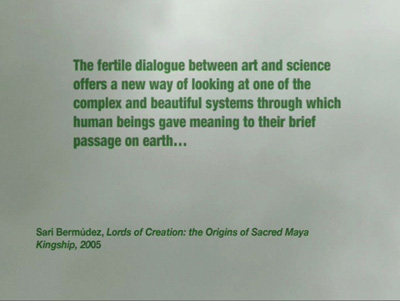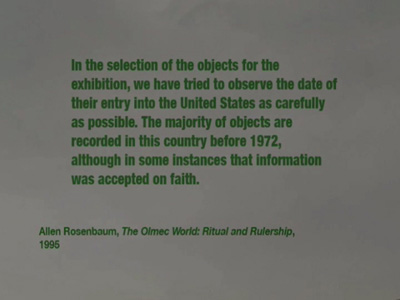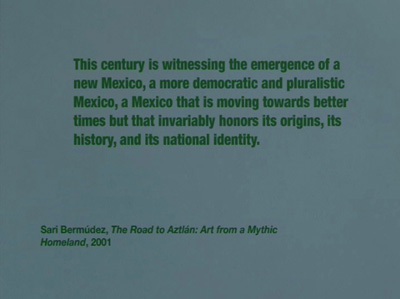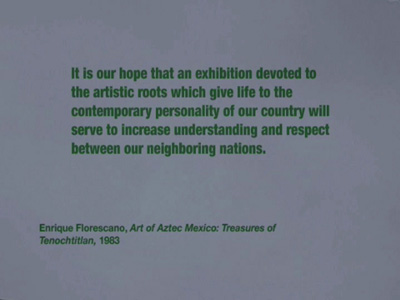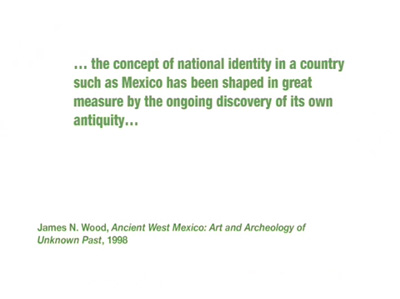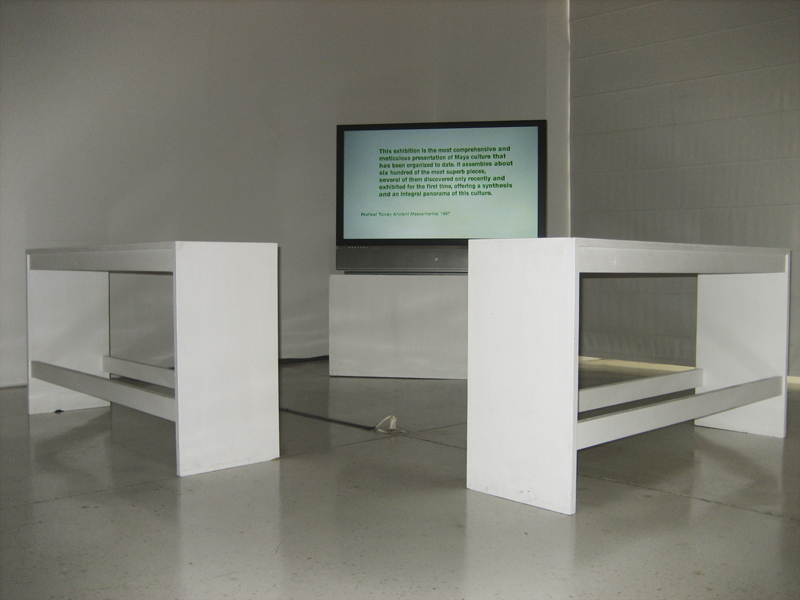Adjacent to the catalogues' wall installation, a silent video formatted in four sections was screened on a monitor. This video presented fragments of the catalogues' prologues, which continue to be written often by high-ranking cultural intellectuals and government officials. Among them, I used quotes from Mexican presidents, such as Carlos Salinas de Gortari and Vicente Fox, as well as from other politicians, such as Tony Blair. Mexican intellectuals Octavio Paz and Carlos Fuentes, among others, also contributed. Pre-Hispanic artifacts exhibitions are often presented as national gifts endowed to various countries. In their presentations, politicians and intellectuals make sure to bring into play the ambassadorial function of these catalogues. Accompanying these political overtures, art historians, archeologists and anthropologist usually write on the ways the exhibitions' artifacts contribute to science (i.e. how much information can be extracted from a solar calendar stone) or culture (i.e. how beautiful we consider the shapes and figures from that same stone). Museum directors and curators also add to these introductions, usually by promoting the efforts of their institutions and gauging the relevance of each respective exhibition by size, diversity or novelty. The variety of the discourses published in each one of these catalogues, promotes flexibility in the interpretation of pre-Hispanic material. This flexibility is compatible with the great variety of exhibition spaces where the material has been presented: from natural history museums such as the Peabody Museum to contemporary art institutions such as the Guggenheim Museum . In the video, each one of these quotes, which slowly faded in a cloudy background, seemed to be posing the same question: What is the value of pre-Hispanic art/artifacts?
